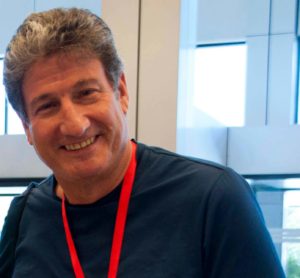Conference
When all systems go: Adapting EMDR to work with complexity
How the interplay of affective systems should influence how we work with comples clients.
Spring 2021

Roger Solomon began his recorded workshop with the stark words: “We are vulnerable”. He was referring to the COVID state of mind. Death and bereavement are difficult to process at the best of times; COVID makes it that much harder because it brings to the surface past losses and the way in which trauma may have affected attachment styles and development processes.
Solomon spoke of the loss of the ‘assumptive world’, our accepted version of the world and how it operates. However fragile our sense of control over our lives, we accept that those we are close to can be relied upon to support us; that, on the whole, the world is benign and personally meaningful. To believe otherwise would make life virtually intolerable. Small wonder then that the sudden losses brought about by COVID-19 can so comprehensively disrupt our worldview. We find ourselves grappling with meaning, questioning our faith, becoming preoccupied with causality and consequently with guilt. These things occur in bereavement and grief at any time, but in the pandemic they are superimposed on an already fragile sense of security.

This “violation of the assumptive world” as Solomon termed it, can trigger earlier trauma which can then interfere with the processes of grief and mourning. Attachment deficits dormant since childhood will resurface as recent loss adds insult to injury. Solomon referenced Therese Rando’s 1993 paper suggesting that the prevalence of complicated mourning is rising 1 . Rando blamed contemporary sociocultural and technological trends which have influenced types of death; the characteristics of personal relationships severed by today’s deaths and the personality and resources of today’s mourners. She concluded that complicated mourning was increasing just as caregivers found themselves more unprepared and limited in their abilities to respond. The paper it would seem is even more relevant in the time of the current pandemic.
Rando recognises three phases of mourning: Avoidance, Confrontation and Accommodation. These three phases comprise six emotional states the mourner will experience – not necessarily sequentially. Rando refers to these states as the six Rs: Recognising the loss; Reacting to separation; Recollecting and Re-experiencing the deceased and the relationship; Relinquishing old attachments to the deceased and old assumptive world and Readjusting, in which the mourner moves adaptively into the new world, without forgetting the old. Solomon sees EMDR as particularly well suited to facilitating the journey through which a person may accept the assault on their assumptive world and eventually begin to live fully in the present once more.
Solomon also mentioned the Dual Process (Stroebe & Schut, 2010) 2 and Continuing Bonds (Marwit & Klass, 1996) 3 models as important frameworks.
We were treated to a video recording of Solomon helping a client who had presented with complicated grief. The video illustrated his recognition of how stuckness in grief can be rooted in unprocessed material in the client’s past.
Solomon’s client had experienced multiple losses over a short period of time; her brother, her mother and her wife. Although not especially close to her brother, his death was sudden and closely followed by the more significant losses of mother and life partner. She was haunted by a particularly distressing image; what she called her partner’s “death face”. Significantly, she admitted that it was only in EMDR therapy with Solomon that she had recognised its significance and labelled it her partner’s ‘death face’. Processing the image resulted in loss of some of its ‘scariness’. The client reported that she understood that the death face represented only a snapshot at the end of life and that she did not want to reduce her experience of life with someone she loved to this one instant. She said “now I’m not filled with powerful sadness when I think about her dying. Not that it might not come back but right now it feels like I’ve identified and put words to what I was feeling to part of the trauma so I could work with it. I‘ve never used those words before, death face”.
However, in the subsequent session, the client admitted that she could not bring herself to let go of the pain associated with the ‘death face’. “It just feels scary to let go of that pain. It’s not that I … it’s like I’m not supposed to let go of this pain”, she said. Then came Solomon’s interweave that would lead to the blocking trauma: “And can you tell me of some experience you’ve had with shoulds in your life?”
The client grew up very well aware of her parent’s expectations of her academic achievements. She said she felt that if she did not meet these expectations she would be shamed. Spontaneously moving back to the ‘death face’ she said, tearfully, her words weighted with belated understanding: “I was supposed to take care of her! I was supposed to be there for her, to allow her to pass peacefully, the way she wanted to”. And then the revelation. The crux of the matter was that the death face image was associated with the last hours of her partner’s life in which her partner was struggling to say something, vaguely sounding to the client’s ears as ‘ma…faaa’. It occurred to the client only later that her partner could have been asking for morphine. This understandably left her with deep distress: “You know, I just feel it was my job to know, I was supposed to know”, she said.
Solomon’s subsequent interweaves enabled the client to arrive at a negative cognition that had been holding her back her entire life: “I’m a bad girl”. The ‘badness’ referred back to a memory concerning her lack of understanding and confusion regarding her sexual preference and that she was to blame (guilty) for an illicit affair she had had with a teacher. Processing the target related to this memory enabled the client to understand that she had been young at the time and was taken advantage of. “I was…didn’t have the support I needed to understand what was going on with me”, she said. Returning to process the ‘death face’ image, she was quickly able to reframe the experience: “Even though I didn’t know what she meant, what she needed, I was still there and I didn’t abandon her. I was there for her, loving her”.
The piece of work shared through the video illustrated the Rando’s phases very well, but also how EMDR can facilitate, as Solomon puts it, “nature’s way”. The client could finally let go of the pain of ‘death face’ and focus instead on her partner’s “brightness, her smile, her cleverness, her intelligence; all the things about her that I loved”.
Rando TA. The Increasing Prevalence of Complicated Mourning: The Onslaught is Just Beginning. OMEGA - Journal of Death and Dying. 1993;26(1):43-59. doi:10.2190/7MDL-RJTF-NA2D-NPQF
Stroebe, M. S., and Schut, H. (2010). The dual process model of coping with bereavement: a decade on. Omega: Journal of Death and Dying 61[4]: 273-289.
Marwit, S. J., & Klass, D. (1996). Grief and the role of the inner representation of the deceased. In D. Klass, P. R., Silverman, and S. Nickman (Eds.,) Continuing Bonds (pp. 297-309). Philadelphia, PA: Taylor and Francis.

Conference
How the interplay of affective systems should influence how we work with comples clients.